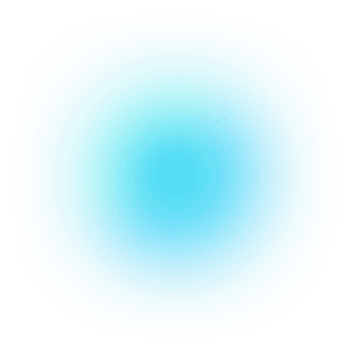

The Impact of Colour Psychology on UX Design
Colours talk and have meanings just like words; every colour you use in your user interface can significantly impact the visual experience of your visitors. Colour Psychology has the power to evoke user emotions for improved sales and conversions.
Colour Psychology in UX is part science and part art. Art is incomplete without colours; colours are visible elements and emotions human eyes feel. Colour harmony in UI can heavily influence your users in buying your products or utilizing your services.
Tru is a boutique consulting firm that specializes in website design and development. With a global presence, our designers are based in multiple countries like Indonesia, the United Kingdom, Canada and more.
Are you interested in website design services infused with the right colour harmony to portray your brand journey?
Go Global TodayUnderstanding the Colour Theory
The best way to categorize the colour from your palette is to understand the colour theory; it is a collection of guidelines and a colour wheel from which the user interface designers can pick the colour that reflects your brand.
Colour theory can be utilized to get a broader perspective on choosing the accent colour, the primary, secondary, and tertiary colours, ensuring that the designers maintain an active colour consistency. The colour theory is formed by three essential elements: colour hue, saturation and brightness. These elements heavily impact the audience's perception of any visual design on the website.
Hue
To simplify, hue is the colour we see, and it relies on three basic colours: red, yellow, and blue, and the secondary ones are orange, green, and violet.
Saturation
The intensity of any colour affects the saturation; the more saturated accent colours can draw the attention of website visitors.
Brightness
The most important aspect of colour psychology in UX is the brightness or luminosity of the colours. User interface designers spot colours that are very bright in nature as well as those that have a darker tone. It is very important for the designer to fuse the bright and dark tones of colours to create a user interface which can connect with your brand's target audience.
The Right Colours For An Impeccable UX Design
Website designers should understand the benefits of leveraging colour harmony and pick the most impactful colours from their palette that can channel the right emotion when a user sees a brand’s website.

Red
Red is the colour that evokes strong reactions from people, often signifying strength, excitement and passion; using red in the user interface can get strong reactions from people. Using different hues of red in the CTA buttons can provoke them to click it more.
Lightening red makes it feminine and romantic while darkening it makes it a bit traditional or royal.
Orange
Signifying youth, orange is a colour that fuses us with energy and adventure. Businesses can use the colour orange and take their customers back on memory lane, as orange was always in trend in the late 70s. More than that, this retro colour has the potential to evoke a sense of creativity in people.
Yellow
What colour comes to your mind when you talk about victory, optimism and happiness? Isn't it yellow? This colour is perfect for baby care businesses and healthcare businesses. The pastel side of yellow can be used for gender neutrality, whereas the darker yellow becomes gold, which signifies wealth. What colour comes to your mind when you talk about luxury? It is indeed golden. Luxe's e-commerce website fuses golden with other darker hues to create an unforgettable colour harmony in UI experiences for visitors.
Green
When talking about emotional design elements in an interface, green brings the "go" element. Not only a symbol of positivity, green is synonymous with environmentalism. However, darker hues of green signify tradition as well as wealth. On the whole, choosing green in your user interface would highlight the message of renewal and growth to your visitors. Lime green is often used to signify growth and hope.
If you are a business owner dealing in environment-related products and services, then green is the colour for you. Choosing this colour as a part of your colour psychology in UX design would bring a warm tone to your brand, as often, this colour is paired with sustainability.
Purple
The book of colour psychology in UX highlights Purple as a colour with varied meanings, the most genuine of which are mystery and spirituality. Like pink, Purple is often associated with feminism. This colour in your user interface can also highlight gender neutrality and help you attract visitors from all communities. Altogether, Purple is inclusive, and it is a must for today's businesses.
Black
Black defines sophistication and a sense of style. It is sometimes tied to feelings of anxiety and sadness, yet it brings back nostalgia and memories. Isn't it? Using black creates an ideal colour harmony in UI for brands and gets the brand's message straight to the visitors. It is a favourite colour choice of e-commerce brands as they include it as either their primary, secondary or tertiary colour in their user interface.
White
Talking about emotional design elements and missing the colour white- is out of the question. White is a universal colour of peace and has a strong emotional connection with people. Just as the colour white brightens each colour it is mixed with, it also creates a sense of purity when merged with the user interface's colour elements. Even luxury brands prefer minimalist designs, and white is the root colour of minimalism and simplicity. Brands like Apple and Microsoft have used this colour in their user interfaces from the very beginning.
Gray
The epitome of modern sophistication, this colour brings emotional design elements to user interfaces. Sometimes dingy and dull, this colour can evoke a moody emotion amongst website visitors and is generally avoided by strong brands.
Brown
Brown keeps you grounded as well, earthy. This colour is the ultimate answer for lifestyle brands who wish to add coziness to their websites. When merged with green, this colour can ooze environmentalism from your website.
Strategies for Choosing a Colour Scheme to Achieve Lead Conversions
Select brand-aligned colours: One of the most effective ways to achieve this is by selecting the right colour scheme for your brand. It's important to choose colours that reflect your brand identity and values so that users can easily recognize your brand across different platforms. By doing so, you can build trust and credibility with your target audience.
Study your target audience: When choosing colours, consider your demographic because different colours evoke different emotions. For instance, younger audiences may react better to bright and bold colours, while the older demographics might prefer more muted and subtle tones.
A/B testing: To determine which colour combination works best for your landing page, use A/B testing tools like Google Optimize and analyze the results to see which combination leads to higher engagement rates and conversions.
By implementing these strategies, you can increase your lead conversions and take your business to the next level.
Examples of How Brands Utilize Colour Psychology for Lead Conversions
Shopify

Shopify is a leading e-commerce platform that effectively uses colour contrast to guide users and drive conversions on its homepage. The page employs three primary hues - white, black, and bright green - to create a contrast that directs users' attention to significant components such as calls-to-action and pricing plans.
White is used mainly for most of the text content, making the content easy to read and contrasting against the darker elements on the page.
Green is used mainly for the background adding the perfect contrast to the page, and it also adds a visual hierarchy through typography weight variations.
Black is employed to draw attention to critical actions like signing up or starting a free trial, which is essential for increasing conversions on an e-commerce platform like Shopify.
Effective landing pages, like Shopify's, can significantly boost user engagement and conversions. Therefore, understanding the role of colour in these pages is crucial for success. A deep understanding of how colour impacts users should be a top priority for designers and marketers.
BigCommerce

BigCommerce, another leading e-commerce platform, strategically utilizes colour contrast on its homepage to enhance user guidance and boost conversions. The site employs a palette of contrasting colours, including navy blue, white, and orange, to highlight key elements like featured products and promotional offers.
Black: Mainly used for text on BigCommerce's platform, it adds visual depth to the design and establishes a clear visual hierarchy through different typography weights.
White: The white text contrasts effectively with the black background, providing ample white space that ensures clear content visibility.
Navy Blue CTA: Represents trustworthiness, reliability, and professionalism, reinforcing BigCommerce's development standing as a trusted e-commerce platform.
Reach out to Tru for BigCommerce Services today to discover the impact of colour psychology on UX design.
Get in Touch NowCarving An Unforgettable User Interface Experience
When comparing colour psychology with creating a memorable brand experience, the role of UI designers is to understand the fundamentals of human cognition. For example, the colour combination used in an ecommerce banner would differ from the ones used to create an awareness campaign.
Forming an Emotional Connection
Invoking the desired emotions can be a daunting task for designers, yet that is the only pathway to improved sales and guaranteed conversions. The role of emotional design elements in the user interface can help businesses become lead magnets.
Guaranteed Conversions
Beauty lies in the eye of the beholder, yet the human mind cannot escape from it, especially when it comes to colours. Thus, the colour schemes play a vital role in meeting the needs of the audience from what they wish to perceive before hitting the purchase button.
Improved Accessibility of Designs
Another point worth mentioning here is the accessibility of website design and maintaining a consistent colour scheme with an effective colour palette. The right colour contrast helps people with weak eyesight to interact with the User Interface. Colours play a crucial role and can impact larger audiences when chosen carefully.
Winding-Up
To conclude, the role of colours is crucial when it comes to designing a particular product or service-related website. The way your website looks to visitors creates a brand image that later forges the user experience, affecting your brand's entire journey.
The best way to concentrate on the colour combinations and tones on your website is to adopt the 60-30-10 rule, which highlights and balances the colour usage on your website. This idea is to use a neutral colour for 60% of your website and then add a complementary colour for 30% of your website; the remaining 10% will be added as the accent colour.
Adding a popping, unexpected hue can also elevate your user interface considerably and set your brand apart from your competitors.


